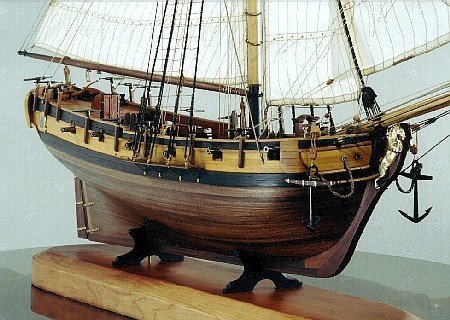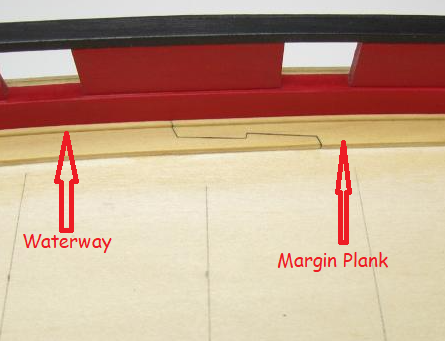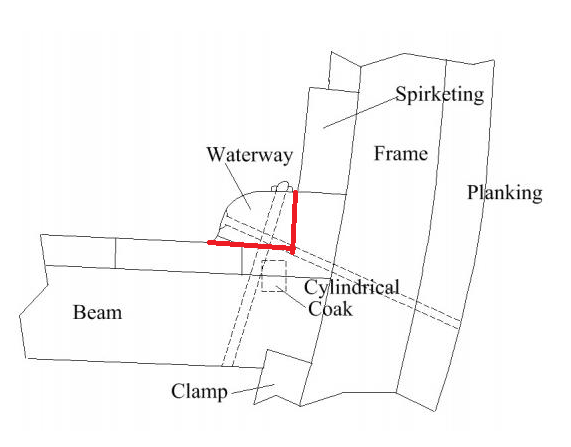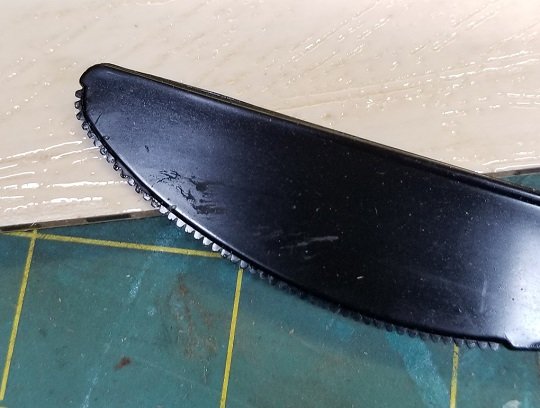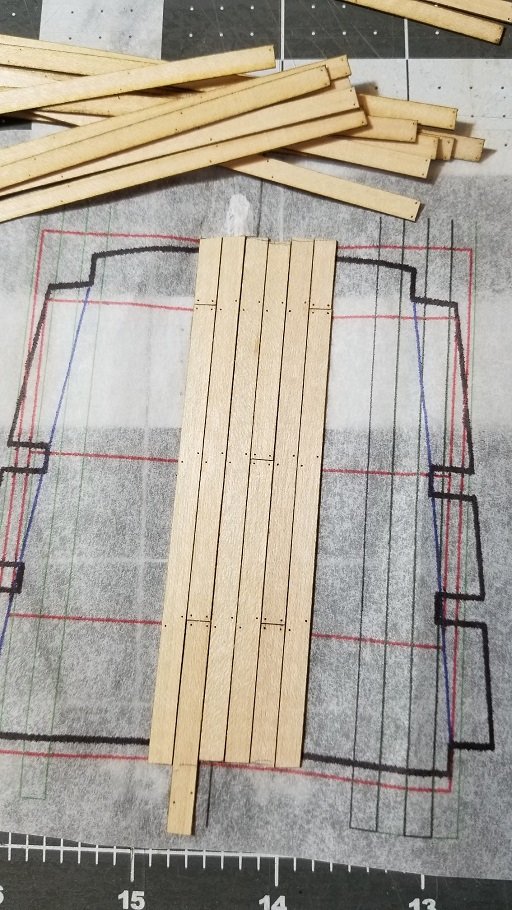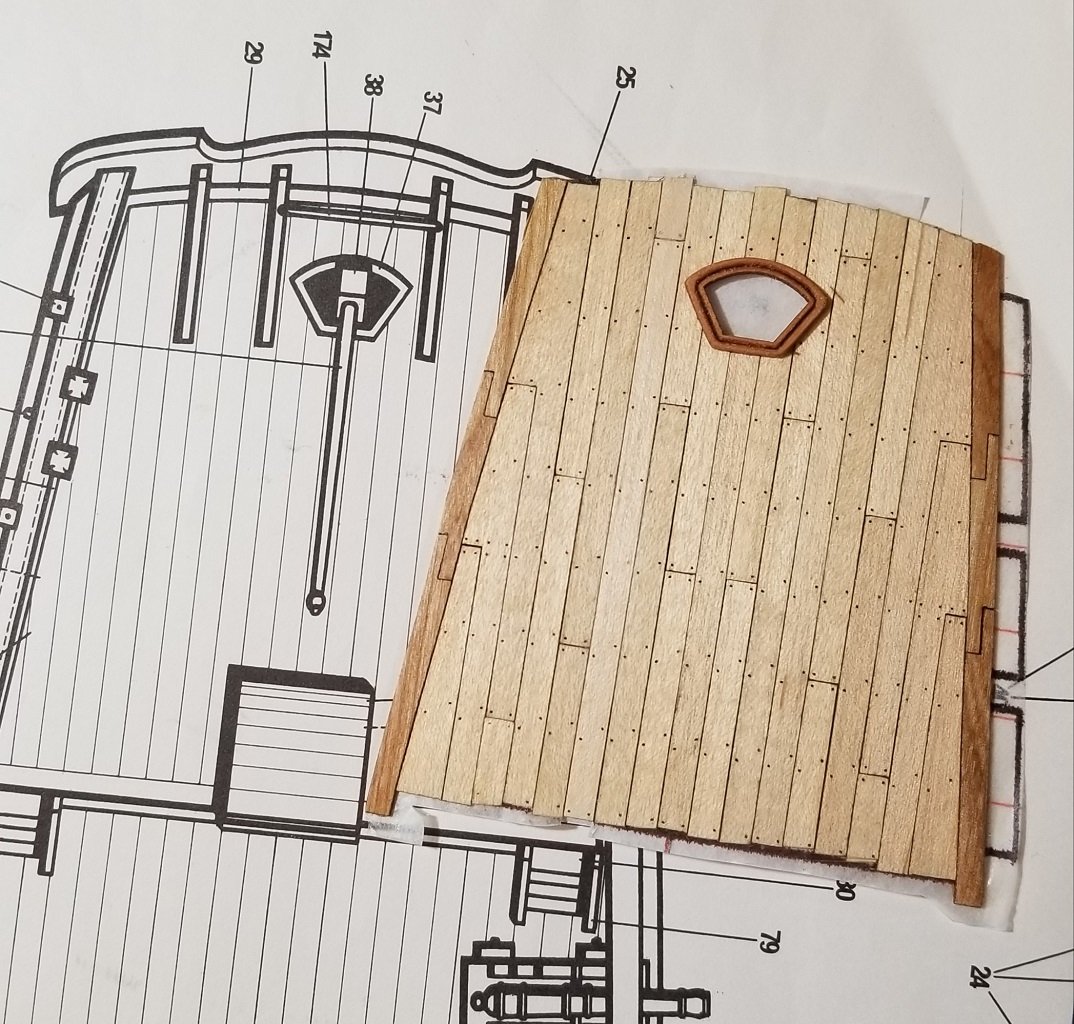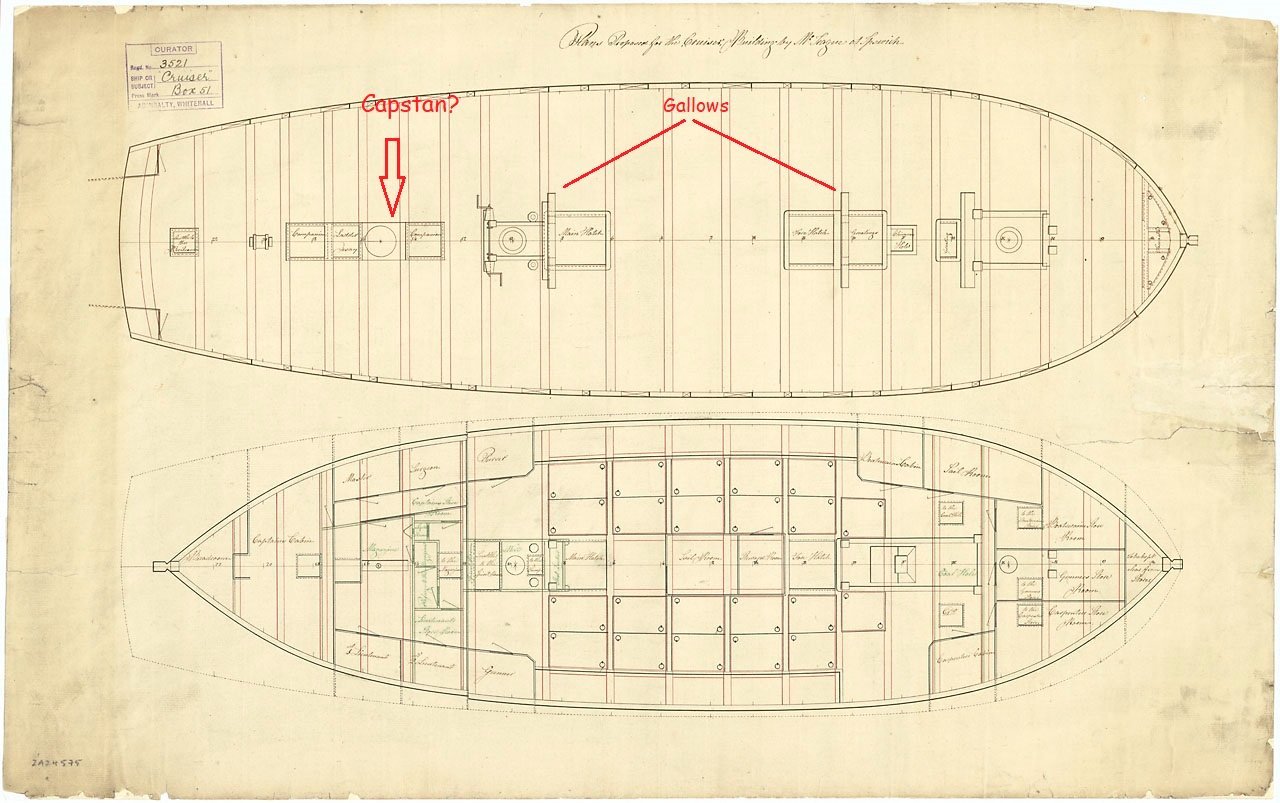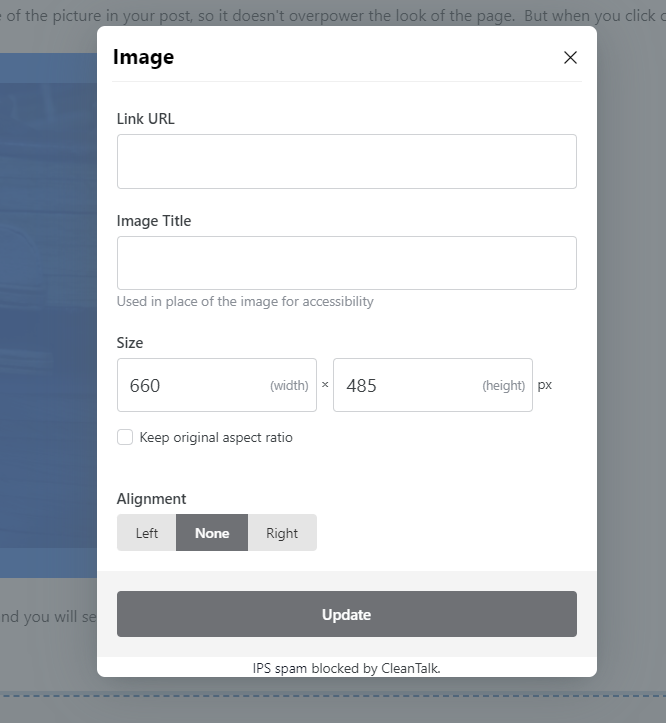-
Posts
3,155 -
Joined
-
Last visited
Content Type
Profiles
Forums
Gallery
Events
Everything posted by Gregory
-
18th and early 19th Century cutter models
Gregory replied to tkay11's topic in Nautical/Naval History
Perhaps scuppers, when appropriate, were one of those things taken for granted and not always shown on models and plans. Chuck says they are on the plans for Cheerful, but I can't identify them on the plans I have seen.- 42 replies
-
- Cutter
- 18th Century
- (and 4 more)
-
Confusing terminology.. Do the instructions call what you are referring to as the waterway. It looks like what you are working on is the margin planking. The waterway is actually a feature that covers the gap between the margin planking and the bulwarks.. Here is an image from Chuck's Cheerful.. On a model it would be similar to the quarter-round molding used between a wall and the floor.. Here is a diagram provided by Allan in another topic. On a model, the waterway is typically formed with a strip that I have defined with the red lines.
-
Couldn't have said it better.. There are all kinds of tricks for faking the rigging. Particularly making your coils separate off the boat.. The oversize pin rack holes should be easy to hide.
- 362 replies
-
- Amati
- Lady Nelson
-
(and 2 more)
Tagged with:
-
Gluing deck, will this work?
Gregory replied to ubjs's topic in Building, Framing, Planking and plating a ships hull and deck
I use Elmer's white glue. I put a few drops along the plank and spread it with this plastic knife which creates little ridges of glue. I keep a wet cloth handy to clean up goofs.. -
Gluing deck, will this work?
Gregory replied to ubjs's topic in Building, Framing, Planking and plating a ships hull and deck
I think you would spend as much time taping as you would gluing, so I don't see how you would save any time. I glue my planks to paper off the model, before gluing the completed assembly onto the model. It take a little more time but easier to adjust and correct mistakes. -
I may have mentioned earlier that Cornwall Model Boats is a great source for Italian kit makers. Even with shipping they are usually substantially less than US vendors like ModelExpo.
-
From the NMM article: The captions on those NMM items sometimes are not accurate. The plans I posted would be in contradiction to that model. Perhaps the description in the plans I posted are not accurate.. The model would not need gallows for a ship's boat, since it has davits. Are those belaying pins in the " gallows" ? Interesting to consider how they would be worked, or are they something else? Another rabbit hole..
-
Regards your ships wheel, have you seen the one at Syren? Wheel for 1:64 Your guns would look fine with no tackle.. At this scale, it often looks oversized and draws attention away from finer points of the model. Breaching ropes can be a nice touch if done neatly, but just as well left off in my humble opinion..
-
I found this drawing at NMM I don't know if it is the same Cruis(z)er as modeled by Caldercraft. I see what might be the capstan and some gallows for the ships boat. Here is a profile that verifies the location of the capstan. I think the gallows speculation holds up also. Profile Following those plans would require significant changes to the arrangement but might be the only reasonable approach to including the boat on deck.
-
I think you have this planking thing down. You have really raised the bar..
- 840 replies
-
- winchelsea
- Syren Ship Model Company
-
(and 1 more)
Tagged with:
-
Hold a match under it.. If it melts, it's polyester.
- 362 replies
-
- Amati
- Lady Nelson
-
(and 2 more)
Tagged with:
-
Yes, I'm in USA. Crafty has some great PE eyebolts and hooks, as well as some thimbles that are hard to find anywhere else..
-
Interesting because the shipping cost I have incurred from Crafty Sailor in Canada seems very reasonable for small items like hooks.. I think it was $4.99
-
Will the resin swivel guns be available in the store anytime soon?
- 1,784 replies
-
- winchelsea
- Syren Ship Model Company
-
(and 1 more)
Tagged with:
-
Another good thing to know, is that you can adjust the size of the picture in your post, so it doesn't overpower the look of the page. But when you click on the picture it will be displayed at full resolution. Just double click on the picture while you are composing, and you will see this: Click on the " Keep original aspect ratio " and you can change one aspect and the size will adjust without cropping or distorting. Click on my pictures to see the size change.. You can also do this while editing if you don't like the way it looks after posting. Your original full size picture information is still there, so you can make size changes without re-loading the picture.
-
Put a match to it. Poly will melt. Cotton, linen, etc., will burn.
-
Don't forget, they call it "Shipping and Handling. " The retailers time and materials have to be figured in to the cost of doing business. A small item is not necessarily easier and cheaper to package and ship. Also putting yourself into a niche such as " certain pins only work with certain tools " opens the door for limited access.
-
Many ( most ? ) of the builds here depict treenails in one form or another. All levels of skill are represented. It is more of a modeling convention ( artistic expression ) rather than an accurate portrayal of what one would expect to see on the actual ship. Very few models would ever get built/finished if scale accuracy in every respect was the the goal So it is really a matter of building your ship in a way that you are satisfied with the results, and satisfied that you are improving your skills in a way that encourages you to continue with the hobby.
-
Here are a couple of google Book references with photos. Beautiful yacht, but the proportions do not look much like the model. The American Almanac (?) Forrest and Stream Magazine Aug 1902
About us
Modelshipworld - Advancing Ship Modeling through Research
SSL Secured
Your security is important for us so this Website is SSL-Secured
NRG Mailing Address
Nautical Research Guild
237 South Lincoln Street
Westmont IL, 60559-1917
Model Ship World ® and the MSW logo are Registered Trademarks, and belong to the Nautical Research Guild (United States Patent and Trademark Office: No. 6,929,264 & No. 6,929,274, registered Dec. 20, 2022)
Helpful Links
About the NRG
If you enjoy building ship models that are historically accurate as well as beautiful, then The Nautical Research Guild (NRG) is just right for you.
The Guild is a non-profit educational organization whose mission is to “Advance Ship Modeling Through Research”. We provide support to our members in their efforts to raise the quality of their model ships.
The Nautical Research Guild has published our world-renowned quarterly magazine, The Nautical Research Journal, since 1955. The pages of the Journal are full of articles by accomplished ship modelers who show you how they create those exquisite details on their models, and by maritime historians who show you the correct details to build. The Journal is available in both print and digital editions. Go to the NRG web site (www.thenrg.org) to download a complimentary digital copy of the Journal. The NRG also publishes plan sets, books and compilations of back issues of the Journal and the former Ships in Scale and Model Ship Builder magazines.

